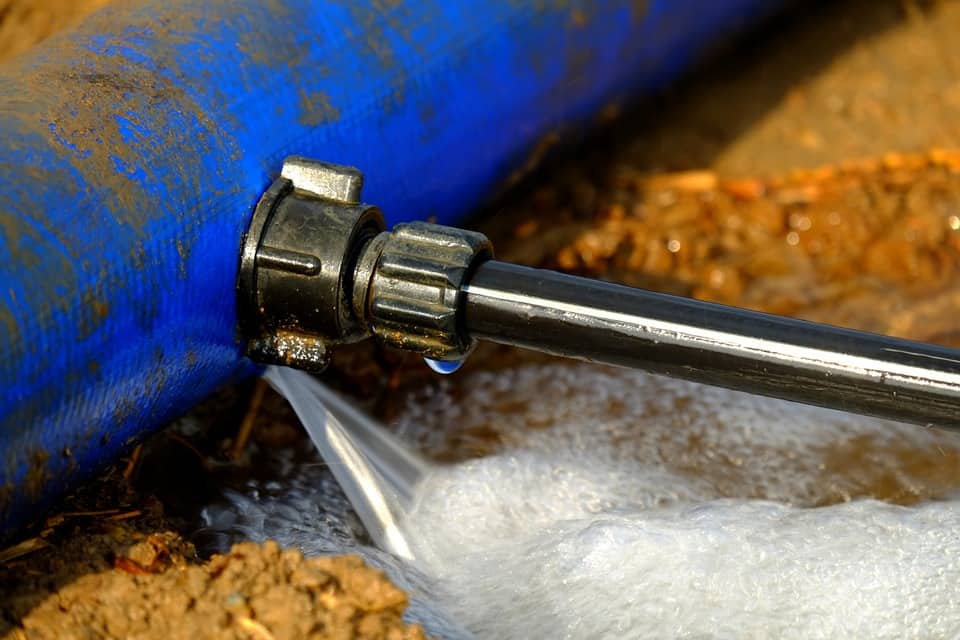
Leaking pipes that are left unnoticed can create a great deal of trouble for homeowners. A leaking pipe can result in damaged wood. It can also create conditions for mold and bacteria to build up, causing health problems. Leaking pipes can also increase your energy and water bills. Locating and repairing a leaking pipe can help you save money and other problems.
Here are 8 ways for you to detect a leaking pipe:
1. Inspect for Mold.
Pipes may be leaking behind cabinets or under floors. By inspecting cabinets and under sinks, you may be able to discover signs of mold or bad smells that are a result of water dripping onto the wood or other materials. You also might want to inspect areas near water hoses that run from appliances like the washing machine, dishwasher or water heater.
2. Inspect Exterior Pipes.
Exterior pipes can burst or crack from freezing in cold weather. A small crack can create a slow drip that might otherwise go unnoticed since there are no larger pools of water around the pipe. Water leaks can also happen outside spigots that won’t turn off properly due to worn out rubber hose gaskets. Replacing the rubber gaskets can help to stop water leaks.
3. Use Food Coloring.
Leaks can occur inside your home’s toilet, causing excess water to run down the toilet drain. If you hear the water in the tank coming on at odd times, it could be due to water leaking into the bowl from the tank. Add a few drops of food coloring into the toilet tank and wait for about 10 minutes. If you see food coloring shows up in the bowl, it could be the sign of a leak in your toilet.
4. Check Your Water Meter.
You can check your home’s water meter by turning off all the water faucets in the house. Check to make sure there are no appliances running like the washing machine or dishwasher. Once you have determined that the water is off in the house, check the water meter to see if the numbers change. Any change in the numbers after you turn off the water can mean there is a leak in your system.
5. Monitor Your Water Bill.
If you have a consistent pattern of usage for your water, but the bill keeps going up, it could be a sign that you have a water leak. If you have inspected the pipes in your home, but still haven’t seen any water leaks, it could be in a pipe underground. Having your pipes inspected by a professional plumbing company like Brisbane North Plumber might help you to locate the leaking pipe and save you money from a continuous water leak.
6. Check Basement Pipes and Plumbing.
Plumbing in basement areas like bathrooms can develop cracks in the piping from colder temperatures in the basement. By inspecting basement pipes, you can locate any possible leaks that can be causing problems and running up your water bill.
7. Check Walls
Leaking pipes inside walls can be detected by inspecting the walls for signs of moisture. Bubbling or peeling paint, along with damp wallpaper or mildew smells can help you determine if you might have a leaking pipe inside a wall. Leaking pipes can also cause spongy or warped flooring from moisture. If you see water stains on the ceiling, especially under bathroom areas, it could be signs that you have a leaking pipe under the tub or in the ceiling area.
8. Check Appliances and Fixtures
Checking Appliances and Fixtures in areas like the kitchen and bathrooms can help you locate any possible leaking pipes. Certain areas like the bottom of P-traps under sinks and toilets are especially bad for developing leaks and cracking.
Leaks can also occur in water supply lines that feed into appliances like refrigerators and water heaters. By checking fittings on supply lines or on valves, you could locate possible water leaks in the piping.
Corrosion that builds up around fittings can also cause gaps in the connections, causing leaks to occur. You can locate water leaks by turning off the water around the fixture and wiping away any excess water. If moisture builds up around the fitting, it could be signs of water leaks.










